Best AR Fitness Apps and Games of 2020
Fitness and Augmented Reality: Reshaping the Industry
8 Ways AR and VR Reshaping the Future of Fitness and Wellness
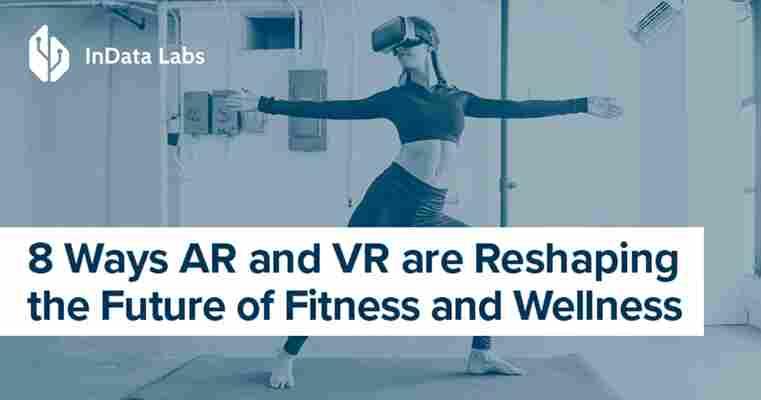
Living in the 21st century, we are immersed in the advancement of technology. AR and VR are redefining different industries in the world. Fitness augmented reality has become a popular technology in the fitness industry today. It is transforming the dynamics of physical activity of people by providing a real-life experience that makes it more immersive and fun. Augmented reality in the fitness industry is becoming everyone’s normal way of exercising.
Many people have been wondering why there is more AR and VR technology in this industry. If you love working out, it is vital to know what is accelerating AR/VR adoption in fitness and how it will continue improving this industry in the future.
In this article, we dive into the different ways AR/VR is affecting this industry.
Fitness Augmented Reality and Virtual Reality Impacts
1. Real-Time Data
Data is vital in every sector, including the fitness and wellness industry. Players of augmented reality in the fitness industry need data to make workout decisions and predict the impact of specific exercises on your body. AR and VR have emerged as key technologies that enable people to understand the intensity of their workouts. There are many virtual reality fitness apps that help us stay fit and on our toes.
For instance, people can use wearable devices embedded with AR and VR technology to check their workouts. These devices can record everything from what distance you cover when jogging or cycling. Users can then use this data to make critical decisions that will affect future workouts.
Source: Unsplash
You can use AR and VR data to decide whether you need to increase or reduce the intensity of your exercise. This makes it easy to exercise without overstraining. It also acts as a motivator because you can keep improving AR and virtual reality workouts when you keep track of what you can currently do.
AR and VR technology can also suggest physical exercises that your body needs. The data collected, such as BMR (Basal Metabolic Rate), can help these applications determine the best workouts and frequency to follow. In the end, you can use these exercises to ensure you achieve your maximum outcome.
2. Offers New Ways for a Workout Regime
Staying consistent for working out can be tricky. Many people cannot work out every day because the exercises become repetitive. Thankfully, there are ways to ensure your workout sessions feel different every day, and that is by infusing technology into your workout program.AR and VR technology is worth considering when looking to make your workouts unique. Using these technologies gives you new ways to work out, helping you avoid repeating exercises. There are applications developed to suit different workout needs, diversifying your workout sessions.
Another advantage of the application of AR in fitness is the CrossFit AI technology. This technology helps in overall physical activities. It includes all the core training for your respiratory endurance, flexibility, stamina, strength, etc.
The major challenge for many people is choosing augmented or virtual apps. This is because there are several virtual reality fitness apps, making it challenging to pick the best. Thankfully, the internet is filled with customer reviews and guides that can help you choose the best apps.
3. Virtual Reality Fitness & Flexibility
Simulating the gym environment at home is one of the best inventions in this industry. It is no longer a must for people to drive to the gym, as they can do everything at home with AR and VR. Buying an AR device that simulates the environment of a gym and comes with an instructor is becoming a trend.
The best thing about this is the flexibility it brings to your workouts. You can do everything you do at the virtual reality gym, even when the physical gym is closed. AR devices meant for exercises come with software that keeps track of one’s strength, helping you increase or reduce workout intensity where necessary.
Source: Unsplash
Many people find looking for good AR and VR devices daunting. There’s a variety of devices and getting what will best fit your needs isn’t difficult. The internet is an excellent resource for people looking to work out from home but cannot find the right software and hardware.
You can, for instance, look up tips on purchasing the latest virtual reality devices online. Various online resources will guide you to finding the best AR/VR devices alongside tips about using them.
In the end, you’ll efficiently work out from home without having to adjust your schedule for any reason. Besides, you’ll exercise safely thanks to the Human Pose Estimation technology that’s infused in AR devices.
4. Keeps You Motivated
Motivation is a critical factor for anyone looking to stay fit. This is because exercising can be a tricky thing to do for many reasons. One of them is the lack of motivation that AR and VR technologies are helping to solve. AR helps in physical fitness to stay motivated. AR and VR applications make exercising easy, and this increases motivation. You can set reminders with these applications so that you do not miss a single workout session. Besides, these applications make it easy to exercise because they guide you to follow every step in your workout sessions.
Another way that AR and VR motivate you to exercise is by recording every workout session. These scores encourage you to work harder to achieve higher scores in the future. AR for physical fitness not only makes us keep track, but a disciplined lifestyle, too. This makes AR and VR worth investing in if you want to succeed in your fitness journey.
5. Entertainment
Exercises not only promote healthy lifestyles, but are also entertaining. You must make every workout session as entertaining as possible, and augmented reality AR can help you do that. There are different AR-enabled devices you can use alongside applications to make your virtual reality workouts fun.
Source: Unsplash
You can add things such as interactive elements, playing video games to your workouts using AR for physical fitness. VR games like rowing machines, zombie apocalypse can increase the fun and adventure element in a full-body VR workout. This can help make your workout sessions engaging and entertaining. Besides, AR devices come with daily tips and tutorials that you can use to learn more about working out and easily reach your workout goals.
Workouts can be intense; therefore, getting entertainment can help ease the pressure. AR and VR make this possible, and that’s why many fitness institutions are considering using them. Working out alone at home can be even more boring, but not with these pieces of technology. You only need to know it, find the proper gear, and your workouts will never boring again.
6. Keeps Track of Your Health
It is vital to keep track of one’s health when exercising. But then, doing so without the help of technology can be tricky, and that’s why AR and VR technologies are becoming popular today. Some applications use these pieces of technology to help you keep track of your workout sessions.
You can quickly know how well you’re progressing by using data from these applications. The insightful data you can extract from AR and VR fitness applications can help you understand how fruitful your workouts are. It can also help you know what exercises you need to do more and improve your workout sessions. All you need to keep track of your health is AR and virtual reality fitness equipment. There is a wide variety of applications that you can choose from when looking for AR/VR equipment. This includes choosing from various software such as applications that can work with AR/VR equipment efficiently.
7. Competition and Shared Experiences
One way to improve workouts is by competing and sharing experiences. This can happen in the gym, but not every time. For instance, meeting and socializing at the gym when the pandemic peaked was a nightmare. One could create a virtual reality gym at home and continue to exercise. There are AR apps that help people compete and share experiences from any location. With the suitable device and software, you can record your augmented reality workout sessions and data, then share it with friends. This helps in motivating others, promotes healthy competition, and makes learning easier.
Source: Unsplash
You can also share your workout experiences and data from AR devices to social media. This can help bring on board friends of friends to work towards a healthy lifestyle. With records showing that almost 93.3 million adults in America are obese, it’s good to share experiences and influence them to work out.
8. Allows You to Wander
The best thing about working out with AR/VR technology is that you can do it anywhere. You can use these technologies with mobile devices such as smartphones and watches. That means you can move from one place to another with them and enjoy personalized workouts. This makes it easy to stick to your workout schedule even when you are on vacation. Besides, you can access real-time data from your workouts when in different environments. This will help you track the changes in the background and how they affect your workout sessions.
If you would like to start working out with technology, start by investing in great devices and software. As mentioned earlier, there are many choices to make when it comes to hardware and software. The aim should be to find sports IT solutions that can help you improve the quality of your workouts.
The Future of AR Fitness: Will It Work Out?
One question many people ask is whether virtual reality fitness is worth investing in? Well, VR is a futuristic technology that has positively affected several industries. Using it in your workout routine can help you achieve your fitness goals faster than you’d ever think. But then, it is first very essential to understand how VR and workouts work together.
The best way to explain virtual reality fitness is by using Beat Saber, a well-known VR game, as an example. This game requires you to cut three-dimensional cubes flying towards you using two lightsabers. However, these cubes fly in various combinations and in different directions. They also come at different speeds, meaning you have to be fast to cut all of them. This turns out to be a tremendous full-body dance and exercise worth a daily workout routine.
Oculus is also there to help you keep track of your daily virtual reality fitness routine. The Oculus Quest 2, for example, collects insightful workout data that can help you know how you are progressing. It tracks everything from your heart rate, movements, and calories that you burn per session.
The best thing about VR in the fitness industry is that it makes exercising fun and immersive. VR technology deserves a place alongside other technologies used in the fitness industry. Its contribution to the AR fitness industry is to help make exercising a fun experience.
Why You Should Use Augmented Reality Fitness App
Now the question comes whether AR fitness is helpful?
After looking at virtual reality fitness, it is worth looking at AR’s contribution to the fitness industry. AR technology has some of the most notable benefits to workouts. First, AR apps help people gather and analyze real-time data from their workouts with the help of artificial intelligence and data science technologies. AR fitness gives you an insight of what is happening with your body during workout sessions.
Source: Unsplash
For instance, various wearable devices in the market use AR fitness technology. These devices can record your heart rate during workouts and help you avoid straining yourself. This also enables you to ensure that you are progressing well, whether you want to build muscle or shed some weight. You can also use an app designed for augmented reality fitness to record the distance covered when exercising. This includes recording the number of steps you have taken and your speed while covering a specific distance. You get a standard view of your workout regime when you have these details at your fingertips.
Besides, AR fitness tools are essential for learning if you love working out. They come with instructional videos that can help you jumpstart your fitness journey. Devices such as AR smart glasses and a VR headset also provide users with real-time instruction, making it easy to make the most of every session.
Is Computer Vision Important to AR and VR?
Computer vision is a widely discussed topic in the AR and VR world. It is a technology field that makes it possible for computers to collect meaningful information from various visual inputs and take action. It helps machines work like human beings to see, observe, and understand. The most important question people ask is how computer vision affects AR and VR. You can also restructure this question to be AR and VR used in computer vision. Computer vision plays the primary role in making AR and VR devices more sophisticated and user-responsive.
In short, it is with augmented reality vision that AR devices can collect, process, analyze, and understand images and videos. This makes it possible to get sophisticated and interactive feedback from these devices. In the end, you can not only improve your schedule but also achieve your fitness goals faster. AR and VR are impacting our lives every day. But then, we often do not see the immense contribution of computer vision to it. Custom computer vision software fuels AR and VR technology, helping people work out and get the desired ROI from every great workout session.
Thus, you can only expect to see more AR/VR and computer vision collaboration in the future. This is because all these technologies are evolving, meaning they’ll make life even easier in the coming days.
Where Else Can You Apply AR And VR?
After reading you could wonder where else you can apply these artificial intelligence solutions. Well, AR and VR apply in many other industries besides the fitness industry. That is why these innovative technologies are becoming mainstream in many industries worldwide.
Let’s look at some examples of industries that use AR and VR.
1. E-commerce
Selling products online was tricky before technology developed and things like AR/VR came up. Today, the internet is one of the best platforms for businesses to sell their products. It is easy for product sellers to showcase their products to their customers using AR technology.
This includes businesses that are into the selling of AR and VR devices. If a customer visits your business website and, for instance, wants wearable AR gear, you can use these AI technologies to visualize the product to them. They can view the product from all angles and see how it works before purchasing it.
2. Education
Technology use in education has become popular in recent years. So, how can we use VR and AR in education? The immersive nature of these two pieces of technology makes them perfect to use in the education industry. They engage and motivate students, making the learning process fun and productive.
Source: Unsplash
This is not only in schools but also for fitness classes. Trainers can instruct trainees in the gym using these devices without being there physically. A virtual reality gym makes it easy for trainees in fitness classes to keep up with their schedules, even when their trainers are unavailable.
3. Gaming
Machine learning and computer vision have been key game changers in the gaming industry. These two technologies, together with VR, have changed the gaming landscape by making it more immersive and adding more fun elements. They combine to give gaming lovers top-notch gaming experiences.
Source: Unsplash
This has also positively affected gaming provider businesses. They can retain players better and also sell more AR gaming products when using these technologies. That explains why research has revealed that the global market size for VR is projected to hit USD 45.09 billion by 2025.
4. Travel and Tourism
Businesses in the hospitality and tourism industries have been significant beneficiaries of AR and VR technology. Such businesses have been able to make their booking processes seamless with this technology. This has positively affected their revenues and reputations.
Besides, AR and VR have made it possible for these businesses to organize virtual tours. Travel agencies can take their customers on immersive virtual travels that feel like real-world touring. This has made it possible for them to stay afloat, especially during a pandemic when traveling was a nightmare.
5. Healthcare
The healthcare industry needs technology more than many other industries in the world. Innovations such as AR and VR have significantly affected how healthcare professionals diagnose and treat patients. This is primarily during surgeries, as surgeons have no room for errors.
Source: Unsplash
AR and VR, together with computer vision, have helped make surgeries safer and more successful. They have also made it possible for doctors to diagnose mental illnesses, depression, and anxiety cases. Fitness also can be part of the healthcare beneficiaries as technology plays a crucial role in reducing obesity and its side effects.
Wrapping Up
Obesity and other health risks that come with it can come up when people cannot exercise. Millions of Americans and people all over the world are looking for ways to exercise and fight these potential problems. One of the best steps people take is thinking about infusing immersive technology into their workout sessions. That is the main reason for the increasing surge of AR and VR fitness.
We have already seen the many benefits that people can reap from doing so. For instance, technology helps people get real-time data from their exercise programs. It also increases engagement by making it easy to share data and compete with friends from different parts of the world. We can only say that with the advancement of technology, people are getting more creative. Using technology to do every chore is more normal than ever. We can expect to see more evolution of AR-VR in workout sessions or personal training plans.
It isn’t easy to exhaust what AR and VR can do for the fitness and wellness industry in one blog. Immersive technology is worth considering if you are looking to get off your couch and be active. You only need to have the proper devices and software and use them to make your lifestyle healthier.
Author Bio:
Daniel has been building teams and coaching others to foster innovation and solve real-time problems. Dan also enjoys photography and traveling.
Scale Up Your with Top-Notch Technologies Implemented
Have a challenging project in mind? Schedule a call with our dedicated experts to discuss the best way to make it delivered as well as the project’s stages, timeline, and budget.
How Augmented Reality will transform the fitness industry – TechCrunch
By Patrick Liu, CEO, PhotonLens

Augmented Reality is coming to the fitness industry and has the promise of changing the way people think about fitness technology. This is not a simple story of users choosing a smart glass over a gym membership, or Augmented Reality (AR) hardware replacing Fitbit or Peloton. Instead, AR will start to appear in more traditional fitness technology (FitTech), while AR smart glasses and headsets will bridge the gap between gaming and traditional fitness activities. FitTech will use more AR, and AR hardware will enable software that gamifies workouts and makes gaming more physically active. As a former CEO of a mobile gaming company, I think that sounds like an exciting future.
The gamification of fitness
The pandemic was an earthquake for the fitness industry, upending the business models of gyms and moving workouts outside or into the home. Smart bikes, smart mirrors, wearables, and other home fitness equipment flourished, with sales in home fitness doubling to $2.3 billion. With vaccinations moving along and lockdowns lifting in many places, schools and gyms are slowly re-opening. Some people will continue to enjoy working out from home, but many sorely miss exercise in physical locations and the social aspects of exercising together. Successful post-pandemic FitTech will allow people to do both. With AR, it’s possible to livestream and workout with others digitally, while still remaining safely and conveniently at home.
Companies like PhotonLens are creating AR headsets for many fitness applications, such as boxing, ping pong, and yoga. These apps add to a traditional sports activity in a number of ways: interaction with celebrity trainers, safe immersion in active gaming environments, and most importantly, gamification of your fitness routine. At PhotonLens, we take gamification pretty seriously; our founders are all former mobile gaming company leaders.
Neuroscience research shows that people are more likely to make habits of activities that they enjoy and that we quickly get bored with repetitive tasks. Studies suggest that 44% of inactive people don’t exercise because it is not fun. The stakes for promoting fitness now are high: studies suggest that people did 32% less physical activity during the pandemic and that obesity among young people increased as life became more sedentary. Previous fittech has either tried to simulate activity (treadmills, for example) or inform you about what you are doing (fitbits, for example). While these devices make exercise easier and more convenient, they don’t do much to make the experience more fun.
XR has the power to make exercise more exciting by gamifying your workout, and the reports on XR fitness games are showing incredible returns. Anecdotal evidence abounds, and studies have found that 15% of VR games burn enough calories during typical play to qualify as medium to intense exercise. Fitness and sports games make up 5 of the 12 top-selling games on the Oculus Quest store.
AR builds on the core strengths of VR fitness, along with a number of practical advantages to other forms of fitness tech. Unlike VR headsets which can cause dizziness and pose some safety issues in fitness, AR headsets mix your physical environment with virtual projections, allowing you to stay present in and aware of your real world. AR smart glasses can even enable entirely new sports – think dodgeball with force fields, airborne boxing, and rockclimbing-meets-arcade-games (take Valo Motion’s games, for example).
What are the technological gateways?
To make that dream a reality, three things must happen: the tech must work, consumers must buy in, and companies must deliver. I’d argue that the tech works. Advances in the newest generation of AR hardware open the door to these possibilities in fitness.
New AR headsets are lightweight enough to support fitness and active gaming. Rapid body and head movements are difficult and strain the neck when a user is wearing a heavy headset. VR headsets and big enterprise AR headsets usually weigh in at 500g, and even lightweight AR headsets used to weigh 250g. That is a lot of weight to strap to your face and then try to exercise. New consumer-facing AR glasses weigh in at around 80g. With lighter, more sunglass-like designs, AR glasses allow for more air flow around and between lenses and user’s faces, preventing nasty sweat deposits and making for easier cleanup.
Controller capabilities also have a major impact on fitness uses. Older generations of AR headsets supported single TV-remote-style controllers, supported by hand and gesture recognition. These older controllers were useful for presentations and office collaboration, but for use cases where precision matters, hand gesture recognition often isn’t enough. For AR controllers to rival the power of VR controllers, they must be dual, wireless, and have 6 degrees of freedom (6 DoF). This allows for movement to be accurately tracked along 6 axes to pinpoint the position and orientation of the user’s hands.
Lightweight devices with dual 6 DoF controllers are the most obvious gateways for the widespread use of AR in fitness, but as AR nears the tipping point of consumer adoption, there are a host of important “background” technologies that are also improving drastically. Computing power matters. AR hardware needs to use next-generation platforms built for XR uses (such as the Qualcomm Snapdragon XR2). SLAM technologies need to be good enough that devices can recognize a variety of hand gestures and create maps of a user’s environment to mix with virtual media (as opposed to a static and unconvincing projection of media that’s not mixed with your environment).
Connection speeds also make a difference for AR’s long-term growth. Current home wifi speeds can support good VR and AR software now, but 5G speeds will be important to support advances in SLAM, better AR software, and lightweight standalone AR headsets. 5G will be especially important to support AR uses beyond the limits of wifi, such as projecting movies or productivity tools on the go, or supporting outdoor workouts and sports like cycling and golf.
The coming revolution
Like any emerging technology, AR still has some way to go, but the path past the tipping point of mass consumer adoption has never been more clear. We have passed many of the technological gateways. When we pass that consumer adoption tipping point, AR will be the most significant hardware breakthrough in the consumer internet since the smartphone. That is a soaring claim, but the numbers back it up. Between 2007 to 2012, global smartphone shipments saw a compound annual growth (CAGR) rate of 42.8%. In comparison, mobile AR is projected to achieve a CAGR of 39% between 2019 and 2024, with AR media & content creation (software that enables companies to build consumer-facing AR) spending hitting an incredible 65% CAGR during that time frame.
With the technology and the market coming into line, all we are waiting for is the right companies ready to lead the advance of AR into new industries and to use AR as a force for good. AR can make new modes of exercise possible, create new sports, and broaden the community of people for whom fitness is a hobby, contributing to a healthier, happier world. At PhotonLens, we think we’re doing just that. If all this sounds exciting, I encourage you to learn more about PhotonLens, or better yet, support our product launch on Kickstarter!
Best AR Fitness Apps and Games of 2020
Augmented reality is one of the coolest technologies to enter the mainstream over the past decade as it mixes the real and virtual worlds together. Games like Pokémon Go have shown just how cool of an experience AR can provide and it has some great fitness uses even though it isn’t a fitness goldmine like virtual reality at the moment. The best AR fitness apps will provide a great reason to go outside and explore the world while enhancing the experience along the way.
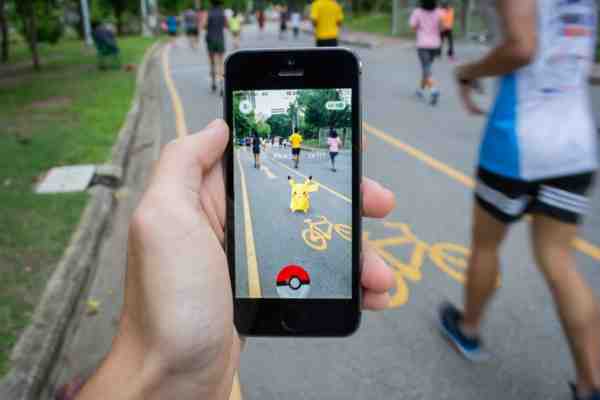
A lot of the coolest augmented reality fitness uses are currently in development and not out just quite yet. It’s worth keeping an eye on the vSports training glasses in particular. From golf to baseball, it plans to support an array of different sports and provide detailed statistics that will help athletes train more efficiently. It’s still in development, but it really shows the potential of augmented reality.
While the best might still be yet to come for augmented reality, there are still plenty of cool apps and games currently on the market. Go outside and get in shape with our list of the best AR fitness apps and games of 2020.
Best AR Fitness Apps & Games of 2020
AR Runner
As the name suggests, AR Runner is an application that is meant to improve your experiencing running. It does this by creating checkpoints around the environment that the player then has to run through in order to set a time. This can be used both indoors and outside, and there are four different modes that make it an enjoyable fitness experience for both solo users and groups. There are leaderboards for players to compete with and 60 handcrafted challenges. At just $0.99, this is one of the most affordable best AR fitness apps.
AR Runner is currently available for both iPhone and iPad as long as they’re running iOS 11 or later.
Golfscape AR
Those looking to improve their golfing game will want to download Golfscape AR, which gives even the most beginner golfer plenty of information without the expense of hiring an experienced caddy. By using augmented reality, it gives golfers a full 360-degree view of the course and allows them to get exact distances for the center, front and back of the green. The core app is free to download, but there’s also a pro version (which runs $39.99 a year) that gives club recommendations, advanced scorekeeping and identifies hazards and targets in real-time.
Golfscape AR is available for both iPhone and iPad as long as they’re running versions of iOS 11 or later.
HADO Dodgeball
There aren’t many augmented reality-based sporting events but HADO Dodgeball is trying to change that. Developed by meleap, HADO provides a fresh spin on dodgeball that uses AR technology to add in shields and barriers. Matches range from one-on-one battles to team competitions with three players on each squad. It looks to be a lot of fun, but you’ll have find a HADO arena in order to check it out. There’s only one in the United States right now (located in Texas), but several Asian countries have multiple locations that players can check out. It’s certainly a sport in its infancy, but is well worth doing if you’re ever nearby a HADO Arena.
Pokémon Go
While one might not typically associate Pokémon Go as being one of the best AR fitness apps at first glance, the mobile hit encourages players to get outside and explore their neighborhood. While one is out trying to catch pocket monsters it’s easy to walk a couple miles without even thinking about it. It does a great job of encouraging a healthy lifestyle, even though it won’t build much of a sweat for fitness enthusiasts. It’s a great gateway into being fit, though, and perfect to play with children.
Pokémon Go is available on both iOS and Android.
Jurassic World Alive & Other Games Like Pokemon Go
Pokémon Go wasn’t just a hit, it became a cultural phenomenon that led to plenty of other properties attempting to get into the AR gaming craze. As a result, there are plenty of similar titles that are worth picking up if you’re not into Nintendo’s cute creatures. Fans of dinosaurs will want to check out Jurassic World Alive, which is one of the best balanced mobile titles. Other solid games include Ghostbusters World and Harry Potter Wizards Unite.
For similar titles that aren’t tied to a property, WallaMe allows players to hide secret messages within the real world while World Brush allows people to create art that others can find. They’re both neat ways to experience the world and get players out of their house and exploring the great outdoors.
QuasAR
Laser tag has been a favorite of kids for decades and one of the best AR fitness apps provides a new way to enjoy it. Using smartphones and AR tech, QuasAR it allows for two players to enjoy a one-on-one laser tag battle. It’s not overly complex, but there are shields and projectiles that help make it really fn to play.
QuasAR is available for free on iPhone and iPad as long as they’re running iOS 11.0 or later.
Solos Smart Glasses
Those looking to improve their cycling experience will want to look into the Solos smart glasses and its companion app. Using GPS technology, it’s able to provide turn-by-turn navigation while also giving the wearer audio and visual cues. Riders can attempt to better their route performance, save their favorite trails, and even split trails into laps in order to gain performance analytics. You won’t get a better and more productive ride. However, the glasses do come with quite a price tag as they retail for $499. So, make sure that you will make full advantage of them upon purchasing as it’s not the type of accessory to go to waste.
Star Walk 2
Similar to Pokémon Go, Star Walk 2 isn’t much of a fitness game but still provides a good reason to go outside. By using augmented reality, it gives gives player a great stargazing experience as they can find the exact position of constellations, planets and even comets. If you live in the city, Star Walk 2 provides a great reason to go to a rural area and out for a late-night walk to take in the spectacle of the galaxy.
There are paid and ad-supported versions of Star Walk 2. It’s available for Android, iPhone, iPad, and Apple Watch.
Temple Treasure Hunt
Taking inspiration from real-life geocaching, Temple Treasure Hunt has players using an interactive map to find clues. It’s a solid way to supplement runs or hikes and a great reason to explore the outdoors. It’s also great for those wanting to go on hikes in a group, and there’s an indoor mode that is perfect for kids.
Temple Treasure Hunt is available on Android for free as long as it’s running version 3.0 or up.
Theodolite
If you are serious about the outdoors and hiking then Theodolite is a must-own app. This viewfinder uses augmented reality to become a one-stop shop for everything from sightseeing to navigation. It’s the best navigation app available and is perfect for recreational or even professional use as plenty of geologists and engineers use it.
Theodolite is currently $7.99 for iPhone and an HD version is offered on iPad for the same price.
Zombies, Run!
If you’re looking to better your cardio then look no further than Zombies, Run!, which has long been one of the best AR fitness apps. Set during a zombie apocalypse, players have to run to a base and complete missions during 20 to 40-minute runs. It pairs the exercise with a fun base building mechanic and provides a great way to get in shape.
Zombies, Run! is available on both iOS and Android for free, although there are microtransactions for those wanting more content.
Augmented reality might not be the fitness haven that virtual reality is just yet, but there are plenty of great games and apps that can help better your enjoyment of the outdoors. The best AR fitness apps will keep the player in shape while also getting them outside to explore the world.

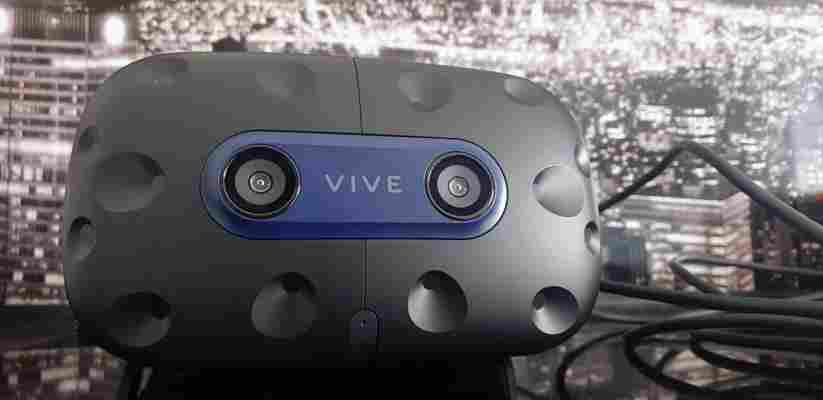
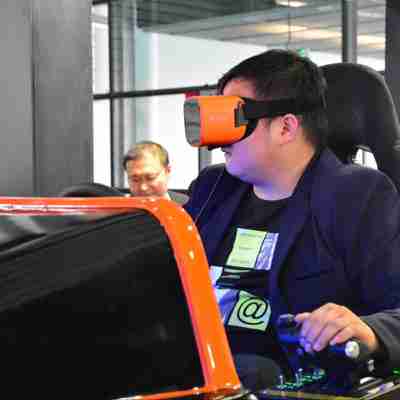

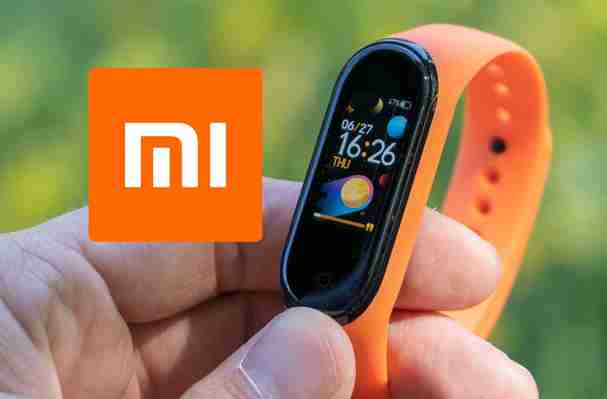
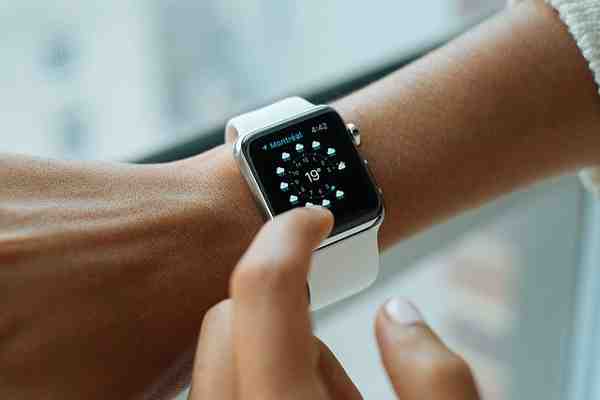
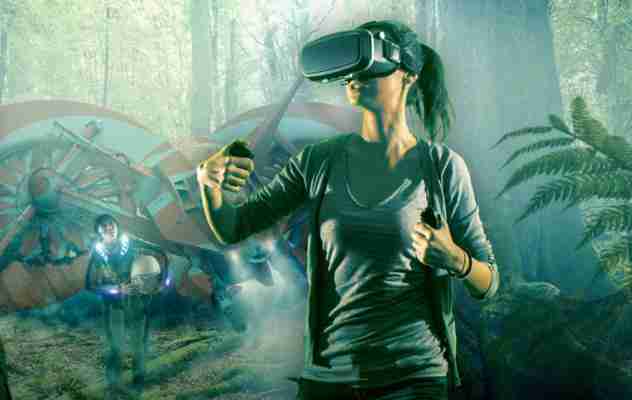

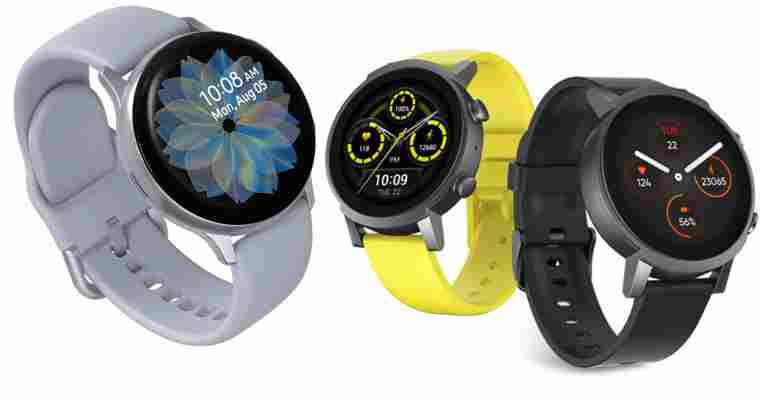
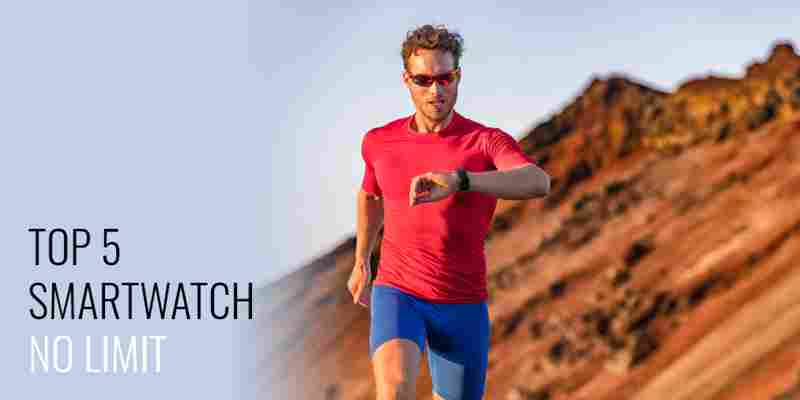


Write a Comment